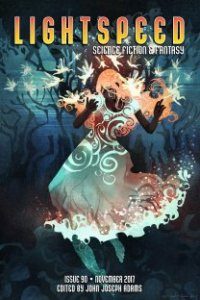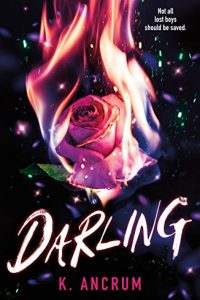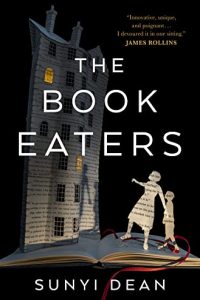Paula Guran Reviews Short Fiction
Lightspeed 11/17, 12/17
Nightmare 12/17
Tor.com 10/24/17
Clarkesworld 11/17
Uncanny 11-12/17
Shimmer #40
Kaleidotrope Autumn ’17
The Dark 11/17
Black Static 11-12/17
 It is already a new year as you read this, but it is not even Thanksgiving as I write. It is also the time of the year when those of my ilk are already considering what fiction was the “best” of the year: a rewarding endeavor, but also a great deal of work. I’m not complaining, just noting a new year of fiction has already started and I am far from finished with that from 2017.
It is already a new year as you read this, but it is not even Thanksgiving as I write. It is also the time of the year when those of my ilk are already considering what fiction was the “best” of the year: a rewarding endeavor, but also a great deal of work. I’m not complaining, just noting a new year of fiction has already started and I am far from finished with that from 2017.
It also brings to mind how dark fiction can be found in venues not really known for it.
Although Lightspeed‘s sister magazine Nightmare is supposed to be the more horrific of the two, I often find better dark fiction in the former rather than the latter. November’s issues bear this out. The scary stand-out from all the originals in both is “The Faerie Tree” by newcomer Kathleen Kayembe. Marianne is a changeling, not a “real girl,” but she is protective of her human family, the only one she’s ever known. She spots the monstrosity of her sister’s new husband (and father of sis’s unborn child) even though no one else can. Her only defense is to call on the faeries, but she knows the price of their aid will be painfully steep. Marianne hesitates, and that alone costs her dearly. When she does call on the fae, it costs even more. These are some horrific faeries and Marianne’s sacrifice is deep.
I also liked the darkness in “You Will Never Know What Opens” by Mari Ness in December’s Lightspeed. It’s a short, second-person telling of life in a house with many doors leading to many worlds. No one (or almost no one) can see them except the narrator. One never knows what will be behind a door, or if it will shut and trap one indefinitely in some elsewhere. Nor does one always have a choice; the doors lure and even snatch. Despite the danger, partially because of it, the narrator has no desire to give up the doors and the possibility of finding the “right” world.
By mentioning the Lightspeed stories, I don’t mean to disparage Nightmare. December’s issue offers some good original fear fiction with Nino Cipri‘s “Which Super Little Dead Girl™ Are You? Take Our Quiz and Find Out!” and “Will You Meet Me There, Out Beyond the Bend?” by Matthew Kressel.
Cipri’s story is disguised as a jolly little quiz. Darkly amusing, but “super” or not, the story reminds us there are always too many tragically dead children.
There are a number of the dead in Kressel’s tale. They are a melancholy bunch, always waiting for life to find them again. It has been said that horror is about the unknowable and that death is the greatest unknown of all. Kressel paints a good picture of death that anyone is sure to fear.
Tor.com is another place publishing dark along with other speculative fiction. “Crispin’s Model” by Max Gladstone is described as a “contemporary Lovecraftian tale of art, obsession, and elder gods.” Indeed, it is. It’s also a good one. Deliah Dane, a self-possessed actor/playwright who earns needed income by modeling for artists, poses for a creepy guy who paints “the noumenal – that which lies beneath appearance.” Partially seen, the results are deeply unsettling; fully revealed, the paintings, well, they are truly devastating. Gladstone evokes “Pickman’s Model” to an extent, but with a decidedly modern take, especially the ending.
Clarkesworld is another publication not known for such things, but you occasionally find dark fantasy or horrific science fiction there. Issue #34’s “Dead Heroes” by Mike Buckley is the latter. People live in a stadium near The Living Forest. “The Blank lives in the forest, and creeps in to take our memories bit by bit.” Soldiers fought against the Forest 30 years before and never came back. The stadium dwellers don’t recall why they were fighting, but revere the fighters as heroes. Then the soldiers return. Missing memory is frightening enough, but forgetting history may doom you.
Uncanny usually has some dark stories and issue #19’s scary standout is the very short and not at all sweet “Learning to See Dragons” by Sarah Monette. It begins: “The spring she was thirteen, Annie taught herself to see dragons.” If you are expecting a tale of the comfort fantasy can offer against the vicissitudes of life – well, go ahead. Expect that. Makes the reading all the better.
Shimmer magazine also often finds a place for dark fiction. Three of four originals in issue #40 fit probably whatever definition of it you might have.
In “Boneset” by Lucia Iglesia, the Bonesetter relieves pain and catalogues it in a manuscript. An unsavory fellow arrives offering to arrange for publication. The only catch is that the Bonesetter must personally “meet a pain you could never snare in a case study. Your last chapter must be written in first person. You’ll only know the mind-carnivore if you feel it gnawing at your own sanity.” Authorship is a dream he cannot deny, and the Bonesetter agrees. He gets, however, more pain than he bargained for.
Andrea Corbin‘s “Raise-the-Dead Cobbler” is a clever recipe for raising the dead. Bringing folks from the past into the present usually has mixed results, and that is true for the witches who work this spell. Ultimately, another recipe is presented. Whatever you may expect from this story, you are likely to be surprised.
“The Atomic Hallows and the Body of Science” by Octavia Cade mixes historical fact and metaphor to tell the tale of those responsible for inventing a “new monster”: the atomic bomb. Few thoughts are more frightening than those about nuclear weapons, and Cade delivers her “history” not only well, but with poetic chill: “A sword is forged with paper and silence. It doesn’t look sharp, but a single page can slice into soft bodies as well as any steel – and more, it can tell other people how to slice into them as well.”
Kaleidotrope is another place to find the dark among its original fiction. Its autumn 2017 issue has “The Ouroboros Bakery” by (again) Octavia Cade. Oksana is a baker with an unusual product: “Oksana tells them before they buy. She always tells them, and they never listen.” I won’t reveal what it is she warns them of, because this tasty dark fantasy is too scrumptious to ruin. Cade depicts Oksana’s baked goods so well you can smell them and works just the right amount of horror into her delightful dough.
Cade is also featured in The Dark #30 – finally, an expected place – with “The Better Part of Drowning“. (I suspect, despite the very different settings and characters, that both this and “The Ouroboros Bakery” share the same world.) Alix is an urchin who earns what little she can by diving into a sea full of giant killer crabs because it is “entertaining to see kids dive in crab beds, and entertaining to see the bloodshed when they were slow enough for catching.” The crabs are not the only danger in this brutal life. The kids follow their own set of pitiless laws, and there are plenty of human predators. Life is a vicious circle, but to survive, you must be part of it. Alix possesses a certain type of compassion, but she is also a survivor. Vivid and chilling.
The other original offering in The Dark #30, “The Sound of His Voice Like the Colour of Salt” by L. Chan, is another excellent one. A ghost boy thinks there is a new girl ghost in the house. He asks the other ghosts about her, but all deny her existence. Realizing she really isn’t in the house, the ghost boy finds her. Amber is a new sort of ghost: named, free, and unencumbered. Her “place is the internet, and there’s more ghosts there than anywhere else in the world.” The ghost boy and the others are bound to the house by the magic of Bibik Neo, who possesses their names. Death is rather miserable for them as “when names were lost and tragedies worn down finer than dust, all ghosts haunted were themselves.” After meeting Amber, the ghost boy gains the courage to escape. A charming, poignant little story, it’s even a bit profound. Beautifully written, it is full of wisdom, well-turned phrases, and memorable truths.
Black Static is, of course, fully dedicated to dark fiction, and issue #61 is sure to please.
After a concussion, about which Kate has no – or perhaps false – memories, everything becomes more than a little strange. She rationalizes “it was normal for things to be strange, when you’d been concussed.” “The Book of Dreems” by Georgina Bruce is intentionally disorienting and the story persuasively reflects how an abuser can skew a victim’s reality
In Mel Kassel‘s “Tancho“, Jameson drowns Laurie, his elderly neighbor, but she doesn’t exactly die. He keeps “her” trapped by a spell in his koi pond while her body chills in an upstairs bathroom. He needs Laurie in the pond to help his fish breed a rare variety, tancho, thus impressing fellow collectors and making money. Really, it all makes sense in the context of the story and is, all-in-all, a satisfying yarn.
Being old and alone and disabled is scary. Especially when there are men pretending to be dogs barking outside, as well as real dogs who can start a campfire and use that to cook food in your backyard. If Ralph Robert Moore had stuck to this story and not unnecessarily supplied back story of little apparent relevance, “For Whom the Dogs Bark” and its crotchety main character might have been even more effective.
The loner narrator of “A Small Life” by Carly Holmes finds happiness on a rowing crew in his in his picturesque village. Then a rowing mate’s sister shows up for a boat ride and he sees a strange creature on the riverbank. It haunts him. He drinks. Sobering up, he returns to rowing and contentment. Jess, the sister, visits the boat again and so does the weird creature that no one else can see. Everyone thinks him loony or worse, and sees his consequent actions as harmful to Jess. The tension builds well until Jess starts looking for answers, and then the premise no longer seems as solid.
I thought stories based on horrific internet-connected supernatural hoodoo were over by this century. “Do Not Google” by Andrew Humphrey shows they are not, but there’s nothing much new to it.
NOTE: A correction: In an earlier issue, I referred to Black Static publishing “mostly male writers.” That is inaccurate. In the six 2017 issues of Black Static there were 16 stories by men and 17 stories by women. I regret the error, apologize, and hereby hope to set the record straight.
And so, otherwise beset by indecisiveness about exactly what is “the best,” I wish you the best of new years.
Paula Guran has edited more than 40 science fiction, fantasy, and horror anthologies and more than 50 novels and collections featuring the same. She’s reviewed and written articles for dozens of publications. She lives in Akron, Ohio, near enough to her grandchildren to frequently be indulgent.
This review and more like it in the January 2018 issue of Locus.





